Lindernia rotundifolia
Scientific name: Lindernia rotundifolia
Family: Scrophulariaceae
Maximum size reached under cultivation: 20 - 30 cm (7.87 - 11.81 inch)
014
Recommended pH range: 6 - 8
Recommended water hardness: 4 - 18°dGH (71.43 - 321.43ppm)
0°C 32°F30°C 86°F
Recommended temperature range: 18 - 28 °C (64.4 - 82.4°F)
Preferred propagation method: Lateral shoots
Native to: East Asia
Growth rate: Fast
Recommended substrate: Fine gravel
Lighting requirements: Bright
Ideal placement in tank: Midground
Common Name
Baby’s Tears
Planting Area
Midground to Background
Propagation
Lindernia rotundifolia, or Baby’s Tears, can be propagated in a couple of straightforward ways, making it an easy plant to grow for aquarists. One common method is through lateral side shoots, which develop naturally and attach to the substrate over time. These side shoots can be gently detached from the mother plant and floated in the aquarium, where they will form their own root systems. Once the roots are established, the plantlets can be planted directly into the substrate.
Another method of propagation occurs if the plant is partially submerged in water. When the stems grow above the waterline, they can produce small flowers. These flowers will eventually form seeds, which can be harvested and germinated to grow new plants. This is less common in fully submerged aquariums but can be a natural process in setups that simulate shallow riverbanks or swamp-like environments.
Difficulty
Easy
Short Description
Baby’s Tears is a fast-growing aquatic plant that is often classified as a weed by horticulturists due to its vigorous growth. Some commercial plant producers even refuse to propagate it, as they consider it invasive. However, in an aquarium setting, this plant plays an important role in absorbing excess nitrates, making it an excellent addition to planted tanks where water quality is a concern. Its rapid growth helps improve the overall health of the aquarium, especially when used in conjunction with nutrient-rich water and a CO2 system to boost its development.
One of the most appealing features of Lindernia rotundifolia is its marbled leaves, which add a visually interesting texture to the aquarium. Although it’s best suited for the background or midground areas, with the right placement it can serve as a focal point in the aquascape. Despite its benefits, Baby’s Tears has fallen out of favor with some aquarists who view it as a common or "boring" plant. However, for beginners or those looking for a hardy, easy-to-grow species, it remains an excellent choice. With proper care, it can become a striking part of the aquarium landscape.
In its natural habitat, Baby’s Tears thrives along the edges of rivers and other waterways, where it can grow both submerged and emersed. Its adaptability makes it well-suited to a wide range of aquarium environments, from high-tech setups with CO2 supplementation to low-tech tanks where it can still thrive without additional care.

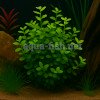 Bacopa australis
Bacopa australis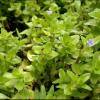 Bacopa caroliniana
Bacopa caroliniana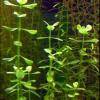 Bacopa monnieri
Bacopa monnieri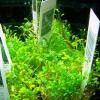 Glossostigma elatinoides
Glossostigma elatinoides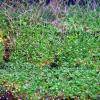 Hemianthus callitrichoides
Hemianthus callitrichoides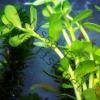 Hemianthus micranthemoides
Hemianthus micranthemoides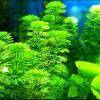 Limnophila aquatica
Limnophila aquatica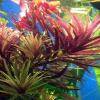 Limnophila aromatica
Limnophila aromatica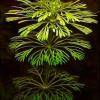 Limnophila sessiliflora
Limnophila sessiliflora